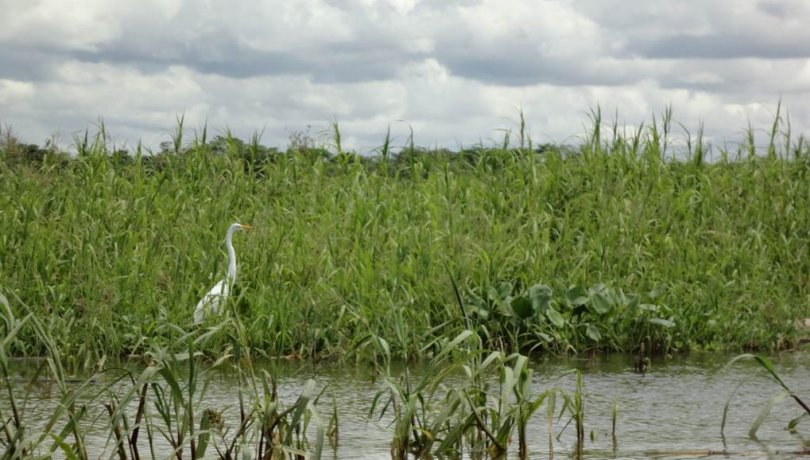The catalogue contains approximately 3.7 million microbial genes, some of which could be used to produce biofuels, antimicrobials, anticancer and even complex compounds.

The Amazon River is a major carbon link between terrestrial and marine ecosystems. Given its importance to the global carbon balance, it is surprising how little is known about the mechanisms involved in the microbial degradation of terrestrial organic matter being discharged into this river, a process that generates CO2 that eventually escapes to the atmosphere.
A collaborative study between the Federal University of Sao Carlos (UFSCar, Brazil) and the Institut de Ciències del Mar (ICM) of Barcelona published today in the journal Microbiome have shed light on this issue by analysing the biochemical machinery of the Amazon River microbiota responsible for degrading terrestrial organic matter. Concretely, the authors have processed a set of 106 metagenomes from the Amazon River covering more than 2,000 Km of its course and including coastal ocean and plume regions.
The effort has resulted in the Amazon River Basin Microbial non-redundant Gene Catalogue (AMnrGC), the most complete microbial gene catalogue to date with approximately 3.7 million genes, most of them belonging to bacteria. According to the experts, about half of the genes found in the Amazon River microbiome (48%) do not have a known function, representing a substantial gene-novelty. Analyses also indicated that the gene repertoire of the Amazon River microbiota could be substantially different from that of other large rivers, although the few metagenomes available from other rivers precluded broader analyses.
“Our main goal was to characterize the microbial gene content of the Amazon River, and apply this information to comprehend how terrestrial organic matter could be processed in the river as it flows towards the ocean”, explains from the UFSCar Célio Dias Santos-Júnior, the first author of the study, who assures that these findings can be extrapolated to other tropical rivers to comprehend the fate of a fraction of the organic carbon fixed by terrestrial plants that is discharged into these water bodies.
“This is important for conservation purposes, since knowing the river microbiota is the first step towards comprehending whether it may be endangered by global change as well as to design conservation strategies and inform policymakers”, points out Santos-Júnior, who adds that “knowing the Amazon River microbiome allows us to better comprehend universal processes, such as the degradation of organic matter that was generated on land, therefore explaining important phenomena, like the huge outgassing observed in this river”.
After processing the gene data, the authors realized that Amazon River microbes are able to degrade terrestrial organic matter in regions with a low concentration of oxygen, temperature and dissolved inorganic carbon, which agrees with previous experimental work that supported a priming effect. This happens when there is a faster degradation of recalcitrant materials -difficult for microbes to digest- in the presence of labile compounds -easily degraded substances-.
Another main conclusion of the study is that plant-derived organic matter degradation occurs differently along the river course, which allowed scientists to identify the main enzyme families involved in this process in different river sections. These enzymes were used to determine the routes through which complex organic matter is degraded, and which species perform these processes in the Amazon River.
Future Plans
“Future research will focus on the study of these enzymes, as they could have properties useful for industry, for example, the paper industry”, indicates from the UFSCar Flavio Henrique-Silva, one of the co-authors of the study. The expert has been working with enzymes that are specific for the degradation of cellulose originating from the Amazon River metagenomes and in his opinion, the results are promising, since they showed improved resistance to inhibition by their final products, what is of interests for second-generation biofuel industries.
Also, the catalogue includes genes that could be useful to develop technologies related to recycling and to produce biofuels, antimicrobials, anticancer and even complex compounds. Finally, the AMnrGC could help to answer important ecological questions like how microorganisms can handle heavy metals, store carbon or sequester ions. This could be useful for environmental biotechnology.
“Our work is an important first step, paving the road for more ambitious sampling campaigns that should investigate gene expression, metaproteomics and the capacity of the Amazon River microbiome to degrade terrestrial organic matter. This will allow us to better comprehend how part of the organic carbon synthesized in tropical rainforests by plants moves through aquatic microbiomes to be ultimately released back to the atmosphere in the form of CO2”, concludes the ICM researcher Ramiro Logares, who also participated in the study.